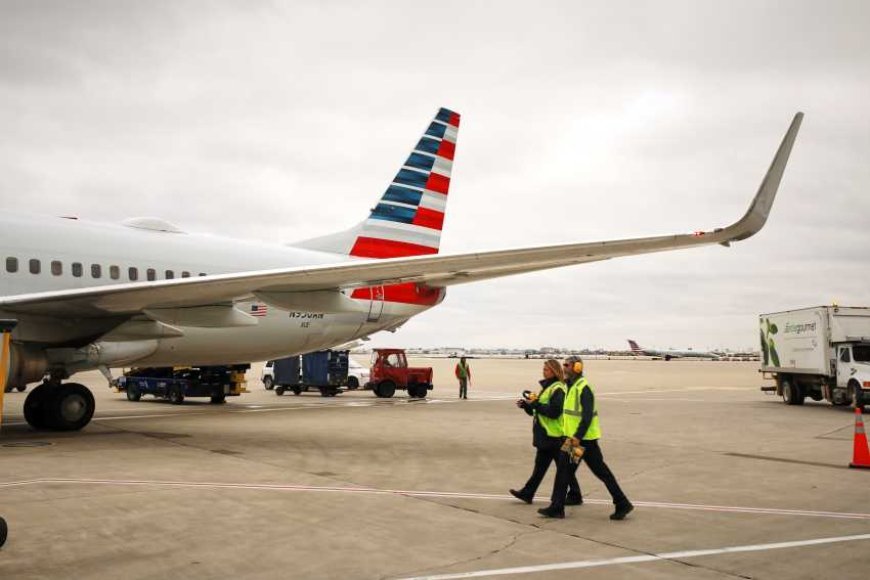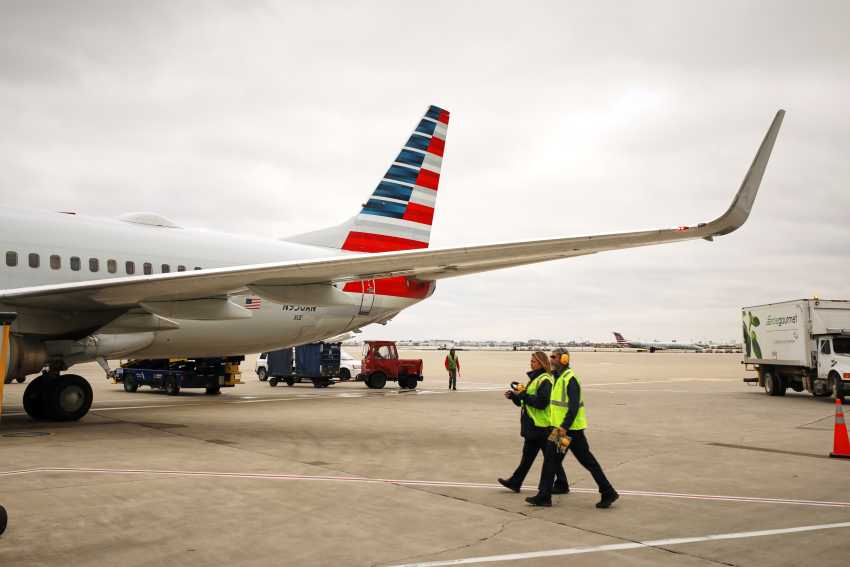Landline Expands Flight-to-Bus Service with American Airlines and Air Canada to Enhance North American Travel Connectivity: Here’s What Travelers Really Need To Know


In a notable development in the travel sector, the company Landline is furthering its commitment to revolutionize air travel by expanding its partnership with major airlines, such as American Airlines and Air Canada. This partnership introduces an innovative way for travelers to connect to regional airports and smaller destinations, utilizing buses as an efficient means of transportation.
The Expansion of Landline’s Operations
Landline, a service based in Colorado, offers an innovative transportation solution that allows travelers to connect from airports to regional destinations via motorcoaches, commonly known as buses. This system is designed to be a cost-effective alternative to small aircraft travel for short-distance flights, offering travelers a seamless connection between their flights and the bus service. The growth of the company marks a significant shift in how regional air travel is being approached, with airlines looking for more efficient ways to offer service to smaller airports.
In September 2025, Landline will begin operating a third route for Air Canada, starting on September 23 with a service running from Toronto Pearson Airport (YYZ) to Kingston Norman Rogers Airport (YGK) in Ontario. The expansion continues in October, when Landline will add two new routes under its partnership with American Airlines, marking the establishment of a new base at Chicago’s O’Hare International Airport (ORD).
Landline’s Revolutionary Model
What makes Landline’s service stand out is its ability to operate within security zones, meaning travelers board buses behind security and are transferred directly from buses to planes at the departure gates. This concept, known as “flight-on-a-bus,” has been described as an innovative solution to provide short-haul connections more efficiently. With Landline’s expansion, travelers will no longer have to deal with the hassle of the traditional layovers or time-consuming airport processes.
For example, Landline’s new operations at Chicago O’Hare will include four daily “flights” from ORD to South Bend International Airport (SBN) starting October 4. This route offers a travel time of approximately 2 hours and 45 minutes, offering a more convenient and time-efficient travel option than traditional flights for short regional connections. A second route from ORD to Chicago Rockford International Airport (RFD) will begin operating on October 20, with five daily bus services covering this route.
One of the key benefits of these new Landline services is the seamless integration with American Airlines. Travelers on Landline buses will be able to earn and redeem AAdvantage miles, American’s loyalty program, just as they would on a standard American Airlines flight. This integration allows travelers to have a consistent experience, whether they are traveling by plane or bus, and further enhances the attractiveness of Landline as a travel option.
Growth and Future Plans for Landline
The expansion of Landline’s services marks an exciting chapter for the company, which started with just a few buses and a single airline partner in late 2019. Despite the challenges posed by the COVID-19 pandemic, the company quickly proved the viability of its model, gaining traction with more airlines and travelers alike. By the end of 2025, Landline anticipates operating nearly 30 buses, servicing not only American Airlines and Air Canada but also Sun Country Airlines, as well as providing independent services in Colorado.
Landline’s growth can be attributed to its flexibility and its ability to adapt to the changing needs of the airline industry. The company’s founders recognized that connecting passengers to smaller regional airports efficiently could help airlines reduce costs and increase accessibility. The shift from air-only to a hybrid air-and-bus model is providing travelers with an innovative and comfortable alternative, while also benefiting airlines by reducing the need for small aircraft on short-haul routes.
Passenger Experience on a Landline Bus
Travelers using Landline’s services can expect a smooth and comfortable ride, designed to mimic the in-flight experience. The buses are equipped with modern amenities such as Wi-Fi, ample legroom, and restrooms, making the journey more comfortable than traditional road travel. This experience allows passengers to work, relax, or enjoy entertainment as they travel to their destinations, much like they would on an airplane.
Additionally, the Landline service removes many of the common inconveniences associated with traditional flight connections, such as long waits at airport gates or delays caused by congestion on runways. With buses, travelers bypass these issues, traveling directly to their destinations without the added stress. This streamlined process makes it an appealing choice for many passengers seeking a more efficient way to reach smaller cities or regional airports.
Landline’s Partnership with Major Airlines
The relationships between Landline and major airlines are crucial to the company’s success. Through these partnerships, Landline is able to offer convenient travel options that are integrated with the airlines’ existing systems. The ability to book a bus connection alongside a flight ticket creates a smooth travel experience for passengers. Additionally, by earning loyalty points and enjoying similar benefits to traditional flights, travelers can take advantage of a unified system that extends beyond typical bus services.
American Airlines, in particular, has been one of Landline’s biggest supporters. With a focus on expanding its domestic network, American is adding new routes that make use of Landline’s bus services to connect travelers to smaller cities. These routes are expected to provide more options for local travelers, enhancing the airline’s overall connectivity and increasing convenience for passengers.
The Benefits of Flight-on-Bus Services
Landline’s flight-on-bus services offer several advantages for both airlines and passengers. For airlines, using buses for short-haul routes allows them to reduce the costs associated with operating small regional flights. Rather than relying on smaller aircraft, which can be less efficient on shorter distances, buses provide a more economical solution while still meeting demand for regional travel.
For passengers, the biggest draw is the convenience and comfort of the service. Buses allow for more flexibility in travel, providing a stress-free and direct connection from one airport to another. The ability to board buses behind security also eliminates the need for passengers to go through multiple security checks, streamlining the travel process and saving time.
Landline’s Future in North America
Looking ahead, Landline aims to further expand its presence in North America, connecting more regional airports with major hubs. With more and more airlines recognizing the benefits of this hybrid air-and-bus travel model, the future looks promising for the company. Additionally, the focus on seamless travel experiences, such as airport-to-airport bus connections and loyalty program integration, is likely to help Landline attract more airline partners in the coming years.
The company’s success with American Airlines and Air Canada is a strong indication that the flight-on-a-bus model will continue to thrive. As the airline industry continues to evolve and adapt to the growing demand for more flexible, affordable, and efficient travel options, Landline’s innovative approach may shape the future of regional transportation.
Conclusion
The expansion of Landline’s flight-on-a-bus services represents a major shift in the way regional travel is managed in North America. With partnerships with American Airlines and Air Canada, the company is poised to revolutionize the travel industry, offering a more efficient and convenient alternative to traditional air travel. As more passengers discover the comfort and ease of Landline’s services, the company is likely to continue growing, providing a reliable and innovative solution for short-haul air travel.
Image Credit: American Airlines
The post Landline Expands Flight-to-Bus Service with American Airlines and Air Canada to Enhance North American Travel Connectivity: Here’s What Travelers Really Need To Know appeared first on Travel And Tour World.






